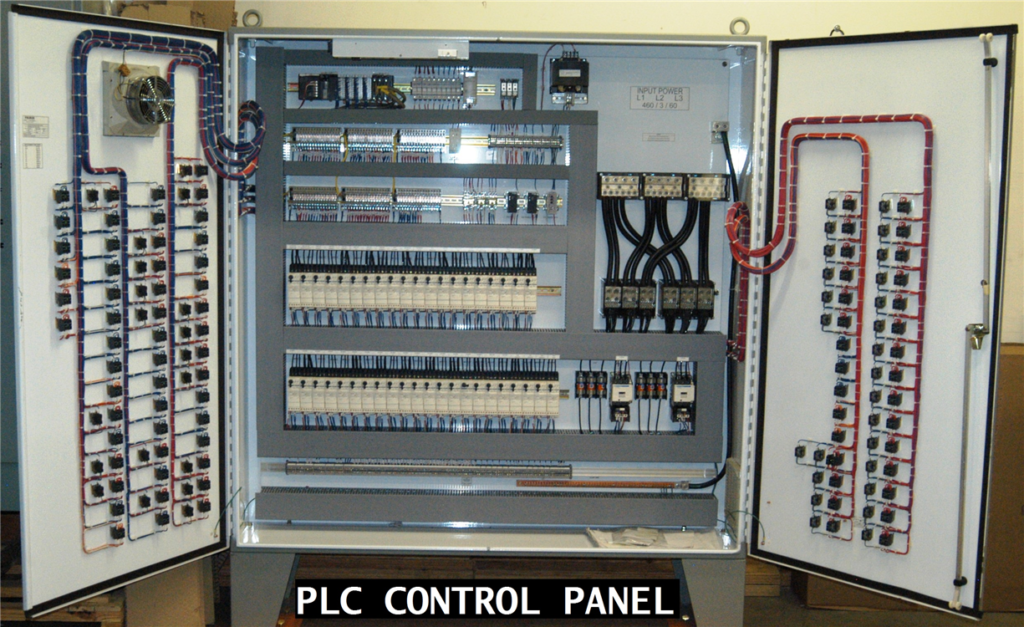A PLC (Programmable Logic Controller) control panel is an electrical control panel designed to house and control PLCs for the automation and control of various industrial processes. PLCs are programmable digital computers used for automation, enabling the control of machinery and processes in industrial environments. The PLC control panel provides a centralized location for housing the PLC unit and associated components, facilitating the programming, monitoring, and control of industrial systems. Here are key components and features associated with a PLC Control Panel:

Components and Features:
- Enclosure:
- Typically made of metal or another suitable material for protection against environmental factors.
- Designed to resist dust, moisture, and temperature variations.
- May include features like doors, locks, and ventilation.
- PLC (Programmable Logic Controller):
- The central computing unit responsible for processing and executing control logic based on programmed instructions.
- Programmable to perform specific tasks and control various aspects of an industrial process.
- Input/Output Modules (I/O Modules):
- Connect sensors and actuators to the PLC, allowing it to interface with the physical world.
- Analog and digital I/O modules for handling different types of signals.
- Human-Machine Interface (HMI):
- Touchscreens, panels, or displays for monitoring and interacting with the control system.
- Provides a graphical representation of the process, real-time data, and allows for manual control.
- Communication Modules:
- Interfaces for connecting the PLC control system to other devices, networks, or supervisory systems (e.g., SCADA).
- Enables data exchange and integration with higher-level control systems.
- Control Devices:
- Control Switches and Buttons: Input devices for manual control or override.
- Emergency Stop Button: Provides a quick way to shut down the system in emergencies.
- Power Supplies:
- Ensures a stable and reliable power source for the PLC and associated components.
- Safety Features:
- Safety Interlocks: Features to enhance safety during maintenance and operation.
- Alarms and Fault Indicators: Notify operators of any issues or faults in the system.
- Circuit Protection:
- Circuit breakers, fuses, or other protective devices to prevent damage from overcurrent or short circuits.
- Wiring and Terminal Blocks:
- Organized wiring using terminal blocks for ease of maintenance and troubleshooting.
Applications:
- Manufacturing: Used in manufacturing plants to automate and control various processes, such as assembly lines, material handling, and quality control.
- Utilities: Applied in utilities for the control of water treatment plants, power distribution systems, and other critical processes.
- Building Automation: Employed in commercial and industrial buildings for the automation of HVAC systems, lighting, security, and energy management.
Installation and Maintenance:
- Follow standard practices for electrical control panel installation, adhering to safety regulations and guidelines.
- Regular maintenance is crucial to ensure the continued reliability of the PLC control system.
| Phase | Three Phase |
| IP Rating | IP55 |
| Usage | PLC Automation |
| Material | Sheet metal |
| Power Source | Electric |
| Mounting Type | Panel |
Having a definite quality management system, we are immersed in bringing forth a top class consignment of PLC Control Panel.
